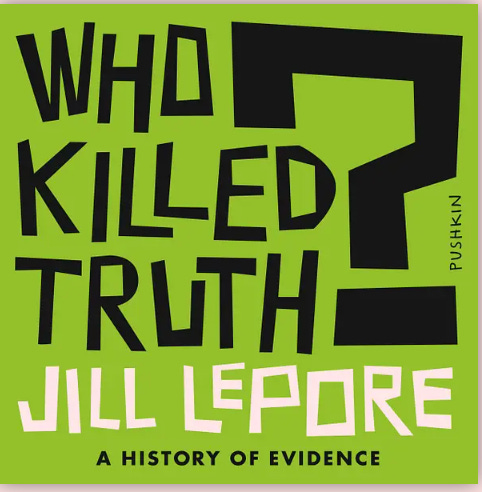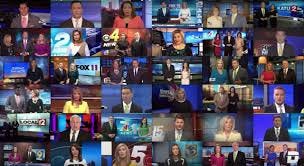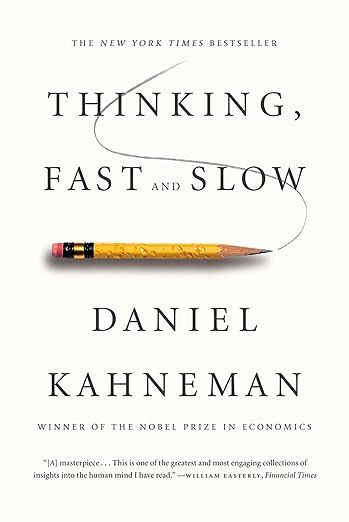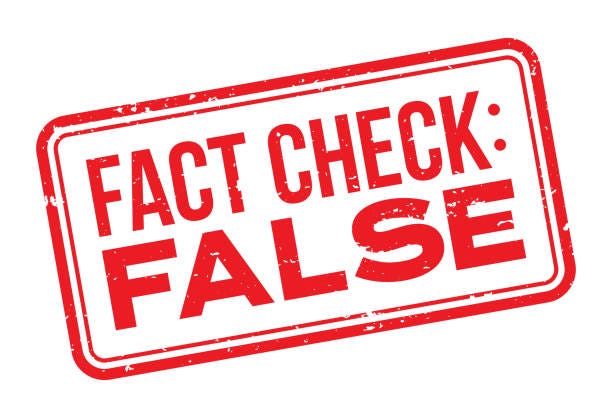By Bruce Watson
During the pandemic, New Yorker writer Jill Lepore debuted a podcast with an unusual mystery — “Who Killed Truth?” Week-by-week, Lepore’s “The Last Archive” examined historical flashpoints, conspiracies, and half-truths to reveal “how we know what we know, how we used to know things, and how it seems sometimes lately that we don’t know anything at all.”
So who killed truth? Round up the usual suspects! QAnon. Russian trolls. Trump and MAGA. And chances are you know a few friends who have taken their own potshots at truth.
“Everyone is entitled to his own opinion,” Daniel Patrick Moynihan said, “but not to his own facts.” Yet Moynihan lived in an era of three TV networks and no Internet. In today’s Post-truth Age, “are personal and proudly defended. “Crime is at historic highs!” (Actually, despite a recent uptick. . .) “The Biden economy sucked!” (Um, no. . .) The list goes on.
So when blindsided by the latest rumor, how can you tactfully suggest a reliable truth detector for your Trumper uncle or cousin? And how can you be so damn sure that everything you take as gospel is, as novelist David Foster Wallace used to say, “capital-T True?”
Critical thinking, once commonly taught in schools, has become a lost art. Critical thinking brings logic, reason, and skepticism to the 24/7 rumor mill. To think critically means to apply time-tested questions to so-called truths before they go viral. Here are the basics:
1. Do you have all the information? In Thinking Fast and Slow, psychologist Daniel Kahnemann named a common thinking flaw, the assumption that “What You See is All There Is.” You might think you’re getting the full story but you’re probably not. Go digging.
2. Is the latest gossip “too good to be true?” “Too good” means its implications are all favorable to one party, all bad news for the other. Life — and politics — are rarely so black-and-white, and seeking nuance can reveal hidden agendas.
3. What group stands to gain? Just as courtroom lawyers ask “cui bono?” (who benefits from a crime?), ask who benefits from any “truth.” Also ask who it stands to hurt. The answers should lead to further questioning.
4. Have you considered the source? Don’t believe anything friends tell you they “heard from a friend!” If the source is from the mainstream media, ask whether they employ fact-checkers and issue corrections for errors. If the source is “independent media” (like Substack), read the source’s other posts to see “where they’re coming from.” And when checking into an independent website, click on “About Us” to see who runs the site and who funds the site. Now find out who this “Us” supported in recent elections.
5. Have you considered the sentiment? Real news is repeated with solemnity. Fake news is repeated with glee.
6. Evidence, please? It’s not enough to say “everyone knows” or “well, it’s just common sense. . .” Find concrete evidence from multiple vetted sources, i.e., sources proven reliable by reputation for accuracy, respected awards (a Peabody, a Pulitzer), and by peer reviews.
7. Have you factored in common biases? Not just “confirmation bias” that leads us to trust what confirms our beliefs but also 1) “availability bias” that strengthens allegations you most recently heard; 2) “anchoring” which stubbornly ties us to initial evidence; and 3) “perseverence bias” that makes changing your mind so hard. (There are dozens more.)
8. Have you followed Ronald Reagan’s advice — “trust but verify”? Never take anyone’s word for anything. Never use just a single source to prove a point. And never assume that any side — yours or mine or your uncle’s — is always right.
There’s not much riding on this other than the future of democracy. In 2020, Barack Obama summed up the danger: “If we do not have the capacity to distinguish what’s true from what’s false, then by definition the marketplace of ideas doesn’t work. And by definition our democracy doesn’t work.”
For more on critical thinking, consider:
— How to Win the War on Truth, by Samuel Spitale.
— The Misinformation Age: How False Beliefs Spread, by Cailin O’Connor.
— The Constitution of Knowledge, by Jonathan Rauch.
Click here to review the many critical thinking podcasts.
Be careful, be suspicious. It’s a jungle out there.









Thank you for this list. Two stood out for me: the explanation of various forms of bias (I’d be using that if I were still teaching) and “Real news is repeated with solemnity. Fake news is repeated with glee.” I can’t help but visualize the serious faces of the three evening world news anchors vs. the smirks of other networks’ anchors. Wish there were “bias controls” that worked like parental controls.
Awareness of the strategic use of misinformation, irrespective of its source, is an important first step in sorting out the reliability and value of news and information.
We are currently faced with a flood of disinformation that is being used to dishearten and immobilize the public.
I've recently written and posted two useful tools: Finding Anchors in the Face of Stress, addresses the need to frame the flood of information and ways to deal with the stresses that it can induce.
https://longcovidjourney2wellness.substack.com/p/finding-anchors-in-the-face-of-stress
Misinformation is a common tool of bullies. The following link addresses the phenomena and some useful strategies to address it.
https://longcovidjourney2wellness.substack.com/p/bullying